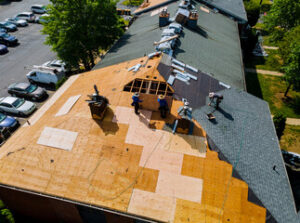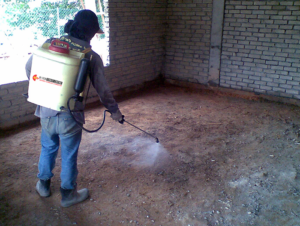Sod is a cultivated grass that comes ready to install and offers an instant lawn. It’s an alternative to planting grass seeds and may work better for you depending on where you live and how low-maintenance you want your landscaping.
Generally, homeowners in the North will want cool-season sod that can stand up to cold temperatures, while those in transitional zones or the south can choose heat-loving warm-season sod. There are also sods for shady areas. Contact Sod And Turf Harrisburg PA now!

Sod is a quick way to create a lush lawn. It’s used for home lawns and also commercial properties like sports fields and golf courses. The biggest advantage of sod is that it provides instant results, making it ideal for homeowners trying to boost their home’s curb appeal before putting it on the market or for businesses that need to get their landscaping in shape quickly.
There are many different types of sod, each suited for a particular purpose and climate. Warm-season sods, such as bermuda grass, grow faster and provide a thick cover that’s great for areas with heavy foot traffic. They’re also more tolerant to drought conditions and pests. Cool-season sods, like fescue grass, have a more traditional grass appearance and require less water than other types of sod.
The type of sod you choose should be suitable for your region’s average weather and climate. In general, warm-season sods grow best in the south, and cool-season sods grow best in the North. You may also want to consider whether the area receives sunlight for most of the day or if it’s shaded.
In addition to being a good choice for homes and large commercial properties, sod can be used to stabilize slopes and help retain soil. It’s also commonly used on athletic fields because it’s durable and provides a consistent playing surface.
If you’re laying sod on an existing lawn, you’ll need to water it regularly, especially during its establishment phase. After that, you should maintain a regular mowing schedule and use a balanced fertilizer to promote growth and prevent weeds from overtaking your lawn. Aerating your lawn periodically will also improve drainage and encourage healthy root growth.
Choosing the right sod or turf for your lawn can have a huge impact on its appearance and how well it holds up to use and weather conditions. The team at HLE Landscaping & Concrete is happy to help you find the perfect sod or turf for your property, and our professional installation and maintenance services can ensure that it stays looking its best. Contact us today to discuss your options!
Installation
With sod, you can have a full yard of green grass in a fraction of the time it takes with seeding or overseeding. However, there are a few things you need to keep in mind when it comes to sod installation and care.
The first thing to remember is that sod should never be laid on top of existing turf. The sod root system needs to make contact with soil, and the old turf can block this contact. This can lead to the roots of the new sod not taking hold and creating a bare spot in your lawn. To avoid this problem, you must first remove the old turf and mix in some topsoil or BigYellowBag’s Black Garden Soil to give the sod a fresh start.
Once the new topsoil is in place, you can lay down the sod. Start by installing sod along the longest straight line, such as a driveway or sidewalk. Use sod staples (long U-shaped pins) to tack down the sod, if necessary. Avoid leaving gaps or overlapping the sod, and stagger the joints from one row to the next in a brick-like pattern. On slopes, sod should be placed across the slope, not vertically with the soil. Once the sod is in place, roll the area with a sod roller to improve sod/soil contact and remove any air pockets. Sod must be watered immediately after installation and frequently throughout its life, until it is firmly rooted.
Some sod varieties are not high-maintenance, while others require more frequent watering, fertilizer, and pest control. When deciding on which type of sod to install, consider the climate where you live, sunlight availability, and maintenance demands.
The best time of year to install sod is during the spring or fall when soil conditions are most favorable for sod establishment. Soil should be tested before laying sod, and any needed soil amendments should be applied at least one month before the sod is installed. This allows the soil to prepare for the sod and ensures that the soil is in optimum condition.
Care
Sod is a roll or square of soil embedded with established grass that’s used to quickly create a lush, green lawn. It bypasses the lengthy process of seed germination and provides an instantaneous landscaping solution. There are many benefits of using sod in your yard compared to seeding, including:
Soil erosion control: Sod is a great way to prevent soil erosion on slopes or newly constructed areas. Uniform appearance: Sod provides a more consistent look than seeded lawns. Weed suppression: Sod is much more effective than a bare dirt lawn at controlling weeds in the first few weeks after installation. Speed of establishment: Laying sod is quicker and easier than seeding, especially in hot weather.
Proper care is essential to the success of any lawn. Watering is critical and needs to be done often, even during winter. It’s important to keep in mind that different soil types require more or less water, and environmental conditions must be taken into consideration.
The most important thing to remember is to not walk on new sod until it has had a chance to fully root in. Walking on sod early can damage the roots and cause it to struggle to survive. Avoid letting children and pets play on the sod until it’s had time to root in, and always wear shoes when walking on a newly planted lawn.
It’s also a good idea to fertilize your new sod about five weeks after it’s been installed. Fertilizing helps give the sod a boost of nutrients that will support healthy growth and fight off disease. You can use a pre-mixed lawn fertilizer or make your own blend. It’s important to remember that too much of any type of fertilizer can be just as harmful as too little.
Another benefit of having a sod yard is that it can help to moderate the temperature in your home. Sod will absorb the sun’s rays, which can reduce the air temperatures around your house by 10 to 15 degrees on a hot summer day. It can also silence noise pollution by absorbing sound.
Maintenance
Sod is a popular choice for homeowners because it gives them instant lawn transformation. It is also a great option for people who do not want to deal with the mess and hassle of seeding & growing grass from seed. However, like any other lawn, sod needs proper care to thrive. It is important to water sod properly, as the soil underneath can dry out if not soaked enough. Additionally, it is necessary to use a starter fertilizer to encourage root growth. Weed control is important as well, because weeds compete with the sod for water & sunlight. New sod is vulnerable to fungus, so it is necessary to apply a fungicide within seven days of installation.
After the first week of watering, you should gradually reduce how often & for how long you water your sod. Check the sod daily to ensure that it is soaking up moisture, but not overwatering. Watering too much can damage the sod & lead to rot. You should also avoid using chemical weed control products until the sod is established, as these can be harmful to new grass.
If you are unsure whether your sod has rooted, try tugging on it. If it pulls up easily, it is still too early to mow.
Once the sod has rooted, it can be mowed as needed. However, it is recommended to wait two weeks before mowing the sod again. This will allow the roots to strengthen & create deep connections with the soil.
During this time, it is recommended to avoid heavy traffic on the lawn. This means no construction, wheelbarrows, or soccer games until the sod is established. It is also necessary to keep children & pets off of the newly planted grass, because their feet can tear up the sod if they walk on it too soon.
In the meantime, you can plant a few shade trees to provide some relief from the sun’s heat. This will also help your sod & turf establish faster. If you are having trouble getting your sod to take hold, contact a landscaper for assistance. They can recommend specific techniques & fertilizers that may work better for your yard.


